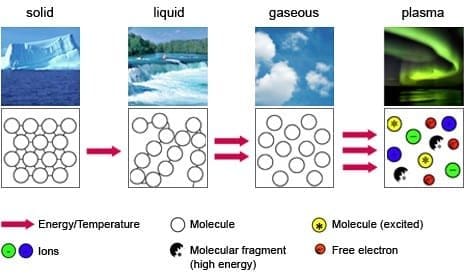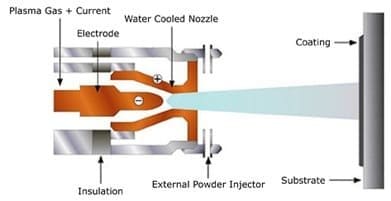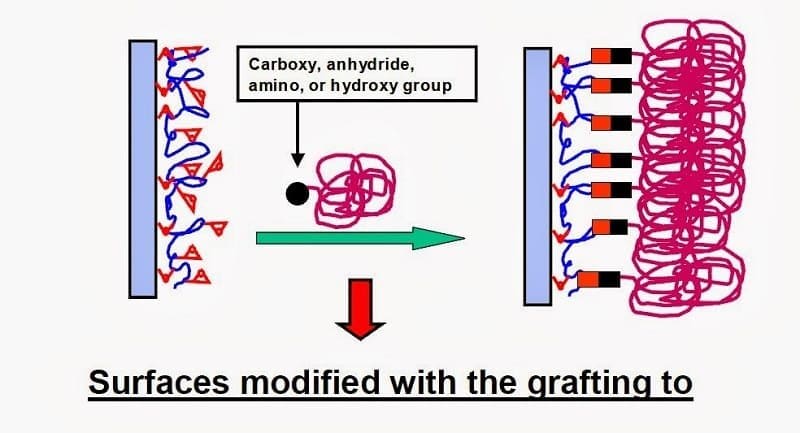Dr. K. S. Muralidhara,
Jt. Director (Labs), Textiles Committee, Govt. of India, Min of Textiles.
- Back Drop:
Textile processing industry largely comprises dyeing and chemical finishing processes. The textile dyeing and finishing is considered to be energy-wasting and highly-polluting process. This is detrimental to the counties like India where energy resources are minimal and environmental concerns are always critically focused. There are efforts to phase out these polluting processes under transformation and green chemistry policy program. The new technological developments are on in full swing.
There has been swift research and commercialization of plasma technology to improve the surface properties of textile material without changing its bulk properties. Modification of surface by plasma treatment offers a lot of benefits and overcomes the drawback of the classical wet textile chemical processing. A major advantage of plasma surface treatment is the minimization of harmful by-products from the process. Plasma treatment of textiles saves large quantity of water, chemicals apart from electrical energy. This is made possible since the plasma process does not produce large volume of effluent or toxic by-products.
- What is Plasma?
When a substance in its gaseous phase is subjected to high energy, the absorbed energy will result in ejection of outermost electron from an atom. Escaped electron becomes free negative charged, while the atom becomes positively charged. This chemical status of a substance is called plasma. The plasma can discharge electricity under certain physical conditions and react with textile surface leading to various chemical fusions and fissions. These effects can alter the surface structure of textiles.
3. Types of Plasma Plasma which is the 4th form of matter has great deal of advantage over other 3 forms of matters as far as chemical processing is concerned. Plasma matter can be applied in many ways. Exciting plasma applications include
- Cold plasma discharge synthesis of new polymeric structures,
- Plasma induced polymerization processes,
- Surface grafting of polymers, and
- Surface modification of polymers.
A. Cold plasma discharge synthesis of new polymeric structures,
Sterilization of food, medical equipment, and contaminated civilian and military gear is just one major potential application of so-called “cold” plasma. These ambient-air-temperature ionized gases could also be used as a Star Trek-like protective shield around sensitive electronics-bearing devices, such as satellites; as cloaking technology for military aircraft, as a means of absorbing radar waves in order to remain hidden on enemy screens; and as components of a new generation of miniature lasers and in advanced, low-energy-consumption fluorescent light tubes.
It’s easy to make plasmas at low pressures, like the near-vacuum of space. It’s much harder to initiate and maintain them at low temperature and at atmospheric pressure,” Laroussi says. “What my co-workers and I have managed to do is to figure out a cost-effective way to make plasma, keep it cold and generate it in volume. We probably produce more total cold plasma than anyone else in the world, and at a relatively low level of input power. “The beauty of this is that it’s relatively inexpensive. The device we’re using costs less than USD 1,000. Compare that to a fusion reactor, which costs millions, or other, smaller devices that start at tens or hundreds of thousands of dollars. Ours is very practical.
Artistic impression of Cold Plasma
The diatomic oxygen is split into single atoms, which then recombine in triplets to form ozone. Cold plasma machines utilize pure oxygen as the input source and produce a maximum concentration of about 5% ozone. They produce far greater quantities of ozone in a given space of time compared to ultraviolet production. However, because cold plasma ozone generators are very expensive, they are found less frequently than either the Ultraviolet or Corona discharge types of ozonator. Some cold plasma units also have the capability of producing short-lived allotropes of oxygen which include O4, O5, O6, O7, etc. These species are even more reactive than ordinary O3.
B Plasma induced polymerization processes,
The main objective of this mechanism is to achieve atmospheric plasma induced graft polymerization of non-C8 fluorocarbons onto cotton fabrics to achieve a durable nano-layer fluorocarbon coating that is water, alcohol, and oil repellent through home launderings. The influence of process parameters on the performance of polyfluorocarbon was studied
using water contact angle measurements, water/alcohol, and oil repellency tests, X-ray photoelectron spectroscopy, and scanning electron microscopy. A design of experiments for different processing conditions was used. Plasma assisted-graft polymerization of fluorocarbon in presence of the crosslinker di (ethyleneglycol) diacrylate (10:1 molar ratio of monomer/crosslinker) resulted in a polyfluorocarbon nanolayer on cotton, which was hydrophobic and durable to five home launderings.
C.Surface grafting of polymers
Reactive species of plasma, resulting from ionization, fragmentation, and excitation processes, are high enough to dissociate a wide variety of chemical bonds, resulting in a significant number of simultaneous recombination mechanisms. Since surface structure of materials is only altered by plasma, the characteristics of textiles will not be affected. Also, as small amount of plasma is enough to produce profound effect. One set of equipment can accommodate to different kinds of gaseous chemicals, the equipment is relatively cost effective and user friendly.
Characteristics that can be improved due to plasma treatment in textiles include wettability, flammability, adhesive bonding, printability, electromagnetic radiation reflection, surface hardness, hydrophilic, hydrophobic tendency, dirt-repellent and antistatic properties. Cold plasma treatment is an important method employed to modify the fibre chemical characteristics, to increase the uptake of dyes and finishes or to impart unique functionality. A few examples of plasma for different treatment include, silanes (SinH2n+2) for waterproof effect, freons for increasing surface tension and oil- and dirt-proof effects and phosphorus containing organic monomers for varied flammability.
A polypropylene fibre can be made hydrophilic by treatment with oxygen plasma treatments. Retaining the hydrophilic characteristics, a cotton fabric can be rendered water repellent by plasma treatment with a fluorocarbon. This type of treatment could be useful for outdoor wear and for hospital theatre clothing. The hydrophilic nature of such treated fabrics can still allow wicking. Such a fabric could therefore also be useful for sportswear.
Depending upon the nature of gas, 3 main effects of plasma treatment may be identified.
A. Etching or cleaning, associated with changes in surface texture and wetting properties, and related to changes in surface roughness.
B. Surface chemical modification, whereby particular chemical groups are introduced to the textile surface. These groups may lead to improved wetting, abrasion resistance, biocompatibility and adhesion. Alternatively, they may increase inertness at the surface.
C. Plasma polymerization or plasma controlled vapour deposition enables the deposition of a very thin film of polymers on textile surfaces. This thin polymeric coatings possess highly crosslinked structures can produce valuable modified properties.
Plasma treatment technology can also improve existing dyeing technology, including the newly developed technology of metalized fabrics. On the other hand, HKPC attempts to integrate plasma treatment technology and supercritical fluid dyeing technology, and replace supercritical fluid with plasma in the dyeing process. The low pressure plasma dyeing technology is still being developed.
However, the industry is skeptic about adoption of plasma treatment in processing of textiles. Perhaps the most important concern voiced by processors is the durability of such treatments. Will a particular treatment withstand repeated wash of at least 20–30 cycles? The answer is CASING (crosslinking by activated species of inert gases) technology. To enhance the stability of the treated surface, the surface is pretreated with the plasma of a noble gas, such as argon. The pretreatment creates a cross linking in the polymer chains at textile surface. The introduction of suitable chemical groups to textile surface allows polymers to be readily grafted onto textile. These added polymers can both stabilize the textile surface and, depending on the nature of grafted polymer, confer other desired properties.
Plasma surface treatment is being used to modify functional properties of fibers and enjoy advantages in comparison with traditional techniques. Plasma includes less water usage and energy consumption, with minimal fibre damage, then making plasma process very attractive. It will be used to enhance the quality of textile products in fabric preparation and in dyeing and finishing methods.
4. Reference
- Dai, X.J. and Kviz, L. 2001, “Study of atmospheric and low pressure plasma modification on the surface properties of synthetic and natural fibres”, CSIRO.
- https://fibres2fabrics.blogspot.in
- The High Tech World of Textiles, 1998, American Textile Manufacturers Institute, Washington, D.C
- Sparavigna, A., Boccato, A., and Canonico, P. 2002, Plasma treatments for technical textiles – an innovative technology with increasing market potential, INFM Metting, Bari
- H Hocker (2002): Plasma Treatment of Textile Fibres, IUPAC, Pure and Applied Chemistry 74, (pp 423-427).
- C J Jahagirdar and L B Tiwari, E®ect of dichlorodimethylsilane on plasma treated cotton fabric, Pramana { J. Phys. 62(5), 1099 (2004)





